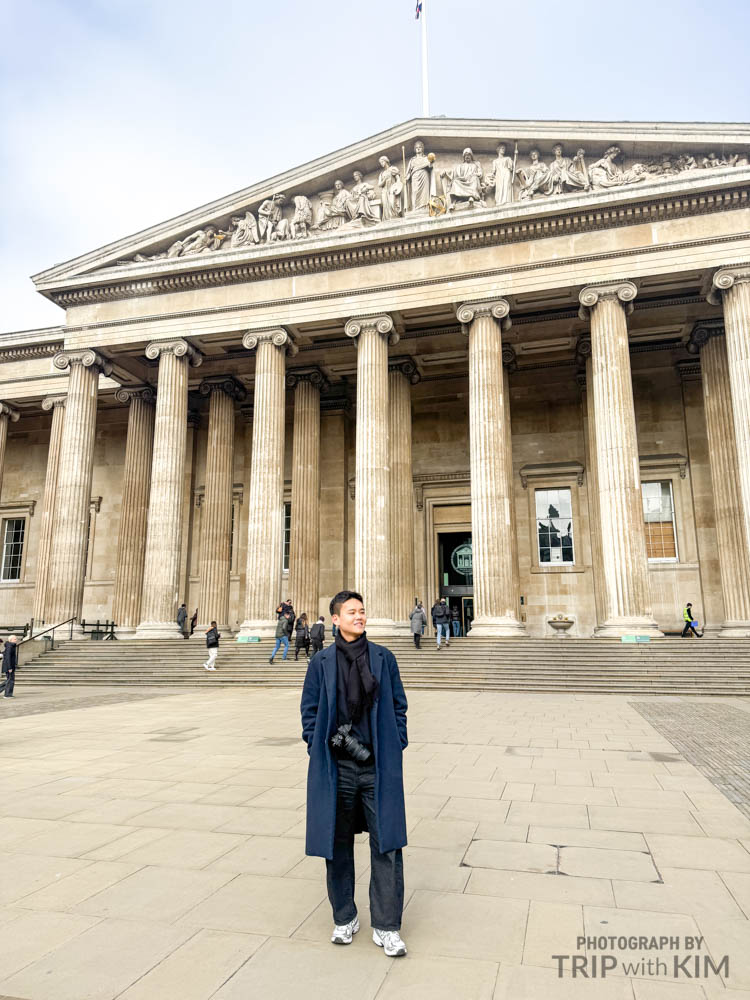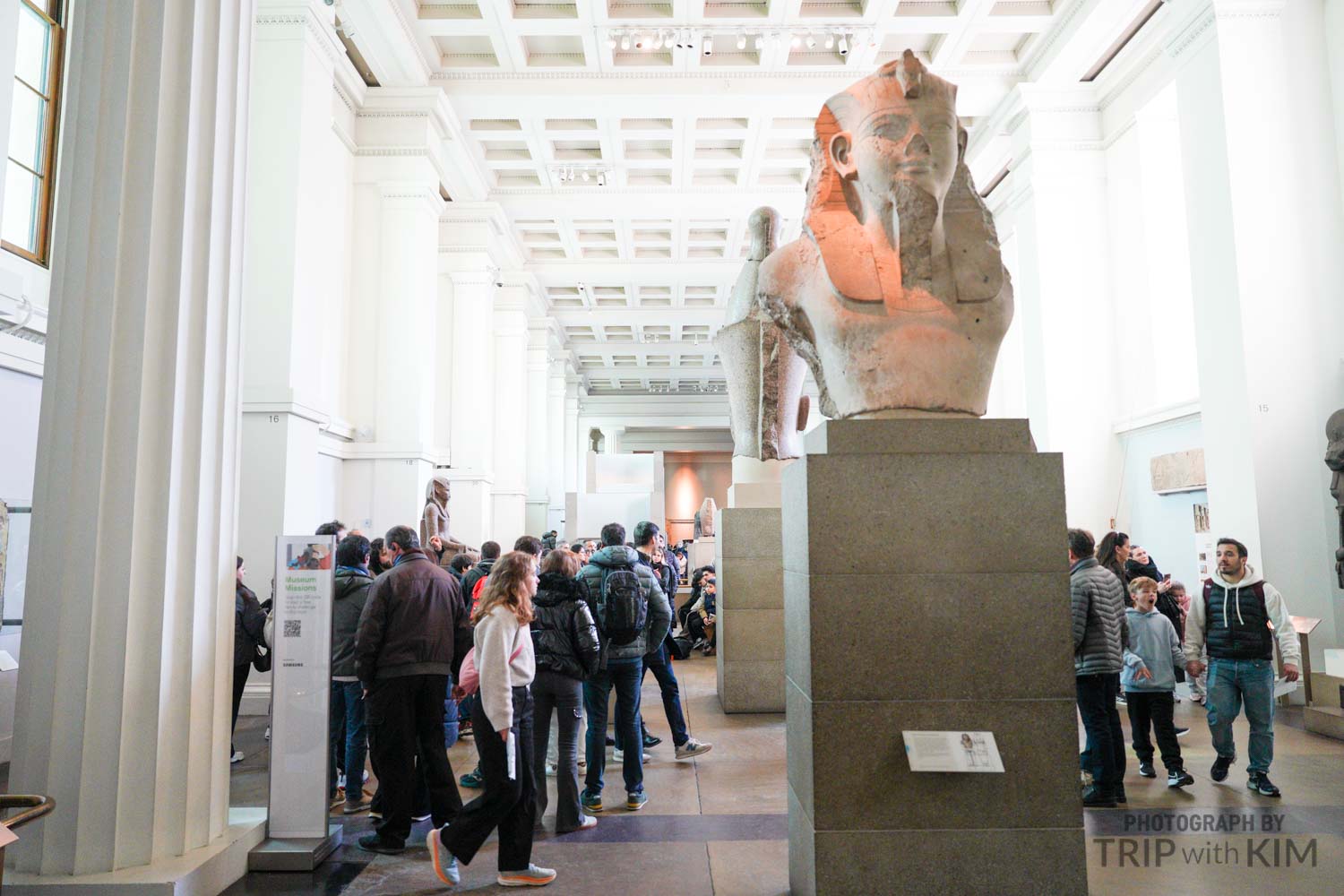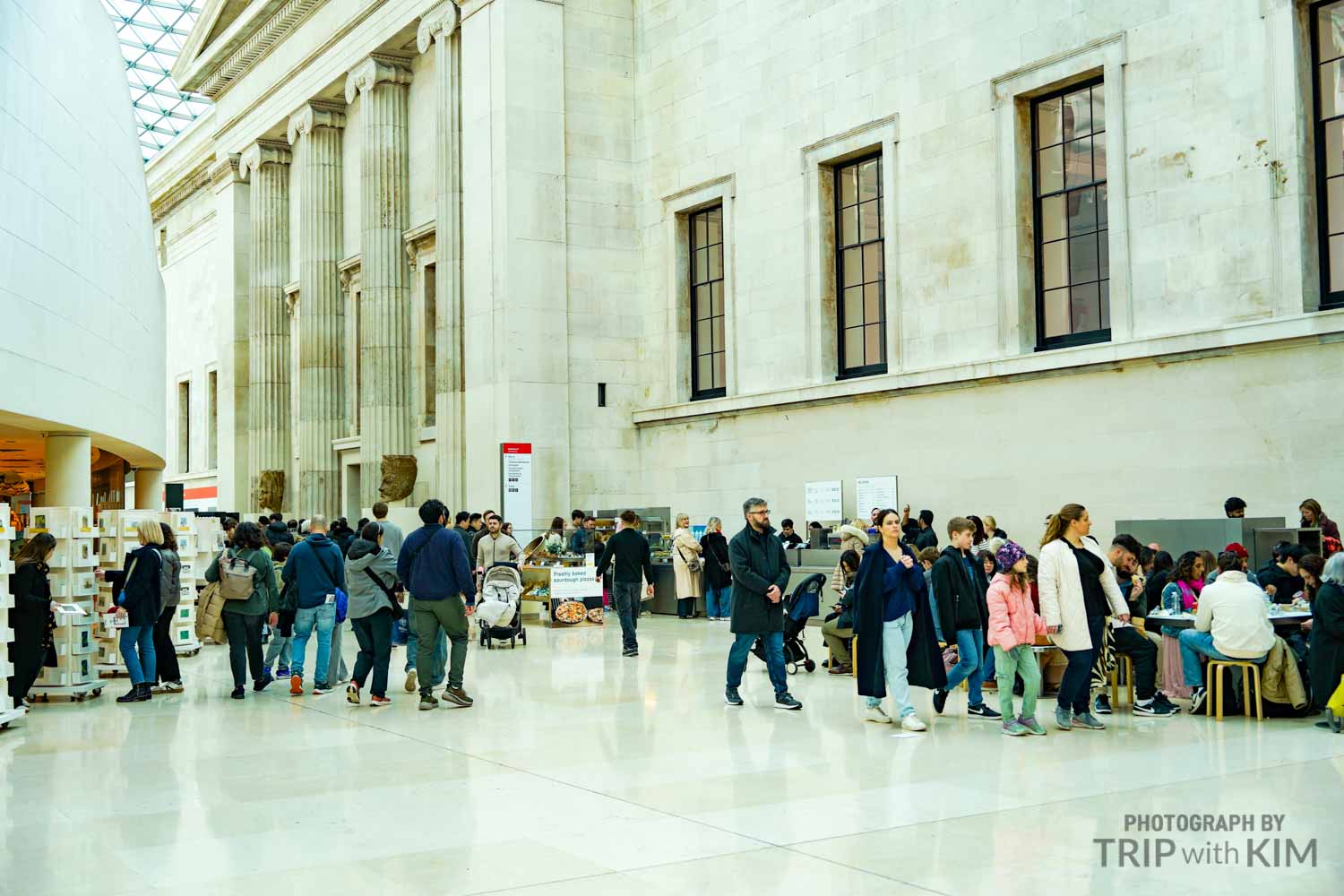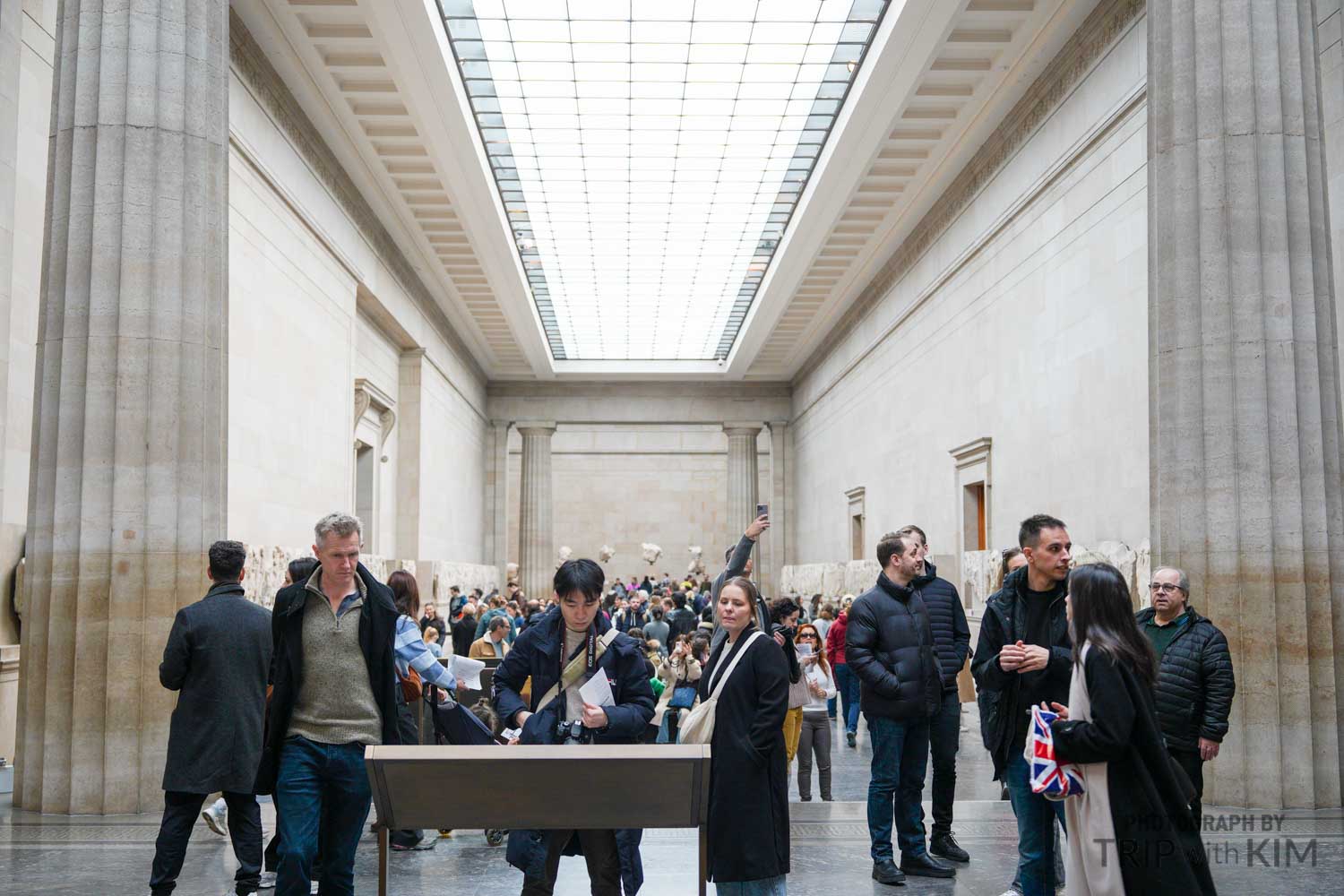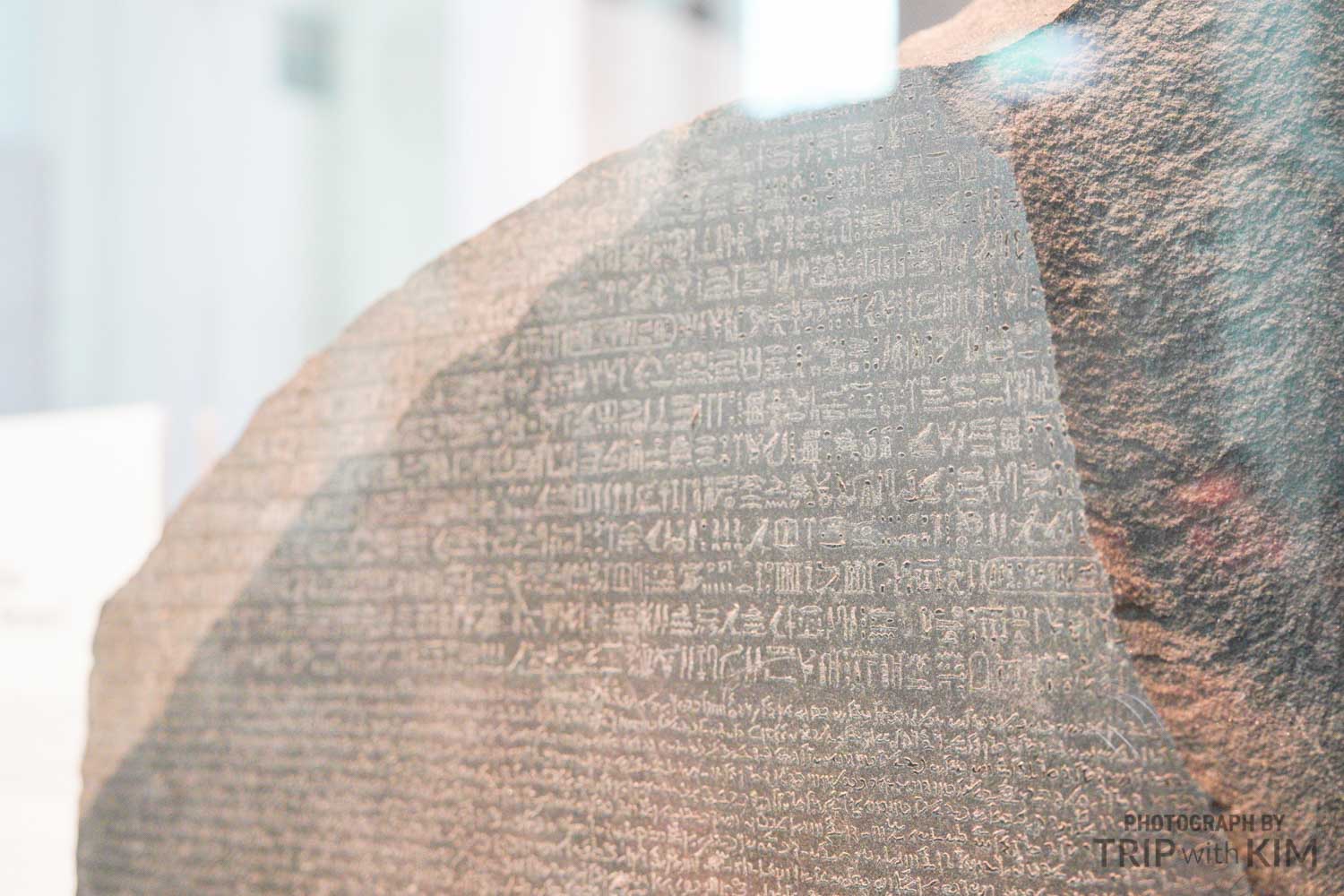The Great Court & Reading Room
Upon entering, the Great Court immediately impresses with its stunning glass roof and open design. This area was originally a reading room used by famous writers like Karl Marx and Charles Dickens, and while it no longer serves as a library, it remains a popular gathering spot within the museum.
The Rosetta Stone: The Key to Understanding Hieroglyphs
The Rosetta Stone, one of the museum’s most famous artifacts, is a 2,200-year-old tablet featuring the same text written in Greek, Demotic, and Egyptian hieroglyphs. Its discovery allowed scholars to finally decode ancient Egyptian writing.
The docent tour provided detailed insights into how the Rosetta Stone was deciphered and its impact on Egyptology. Without this tour, I wouldn’t have fully grasped its significance.
The Parthenon Marbles: Greece’s Controversial Masterpieces
One of the most debated artifacts in the British Museum, the Parthenon Marbles were taken from Greece’s Acropolis in the early 19th century. While Britain claims they were legally acquired, Greece has been demanding their return for decades.
During the tour, we discussed the ongoing debate over these sculptures and their importance in Greek history. Seeing them up close made me appreciate the intricacy of the carvings and the skill of the ancient artisans.
Ancient Egyptian Mummies & Burial Artifacts
The Egyptian Galleries are among the most popular sections of the museum, featuring a vast collection of mummies, sarcophagi, and funerary artifacts. The docent explained how ancient Egyptians preserved bodies for the afterlife and the religious significance of these burial practices.
One of the most fascinating parts of the tour was seeing an actual natural mummy, which had been preserved for thousands of years due to the desert’s dry climate. The level of detail in the hieroglyphics on sarcophagi and the perfectly intact gold masks was stunning.
The Assyrian Lion Hunt Reliefs
These massive stone carvings from ancient Mesopotamia depict Assyrian kings hunting lions, symbolizing power and dominance. While I had seen pictures of these reliefs before, standing in front of them in person was an entirely different experience. The docent pointed out details in the carvings that I wouldn’t have noticed on my own, such as the intricate expressions of the animals and warriors.

